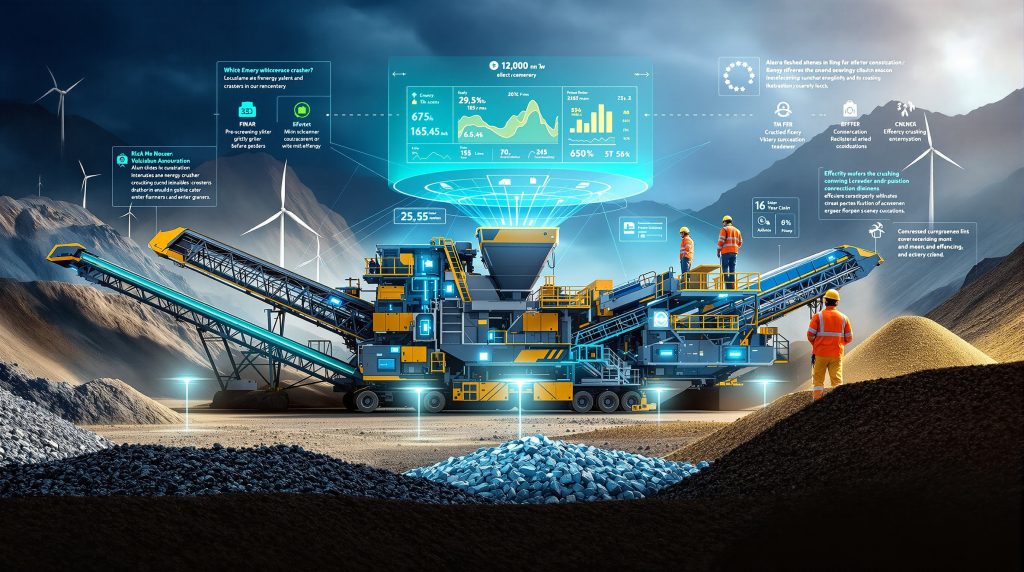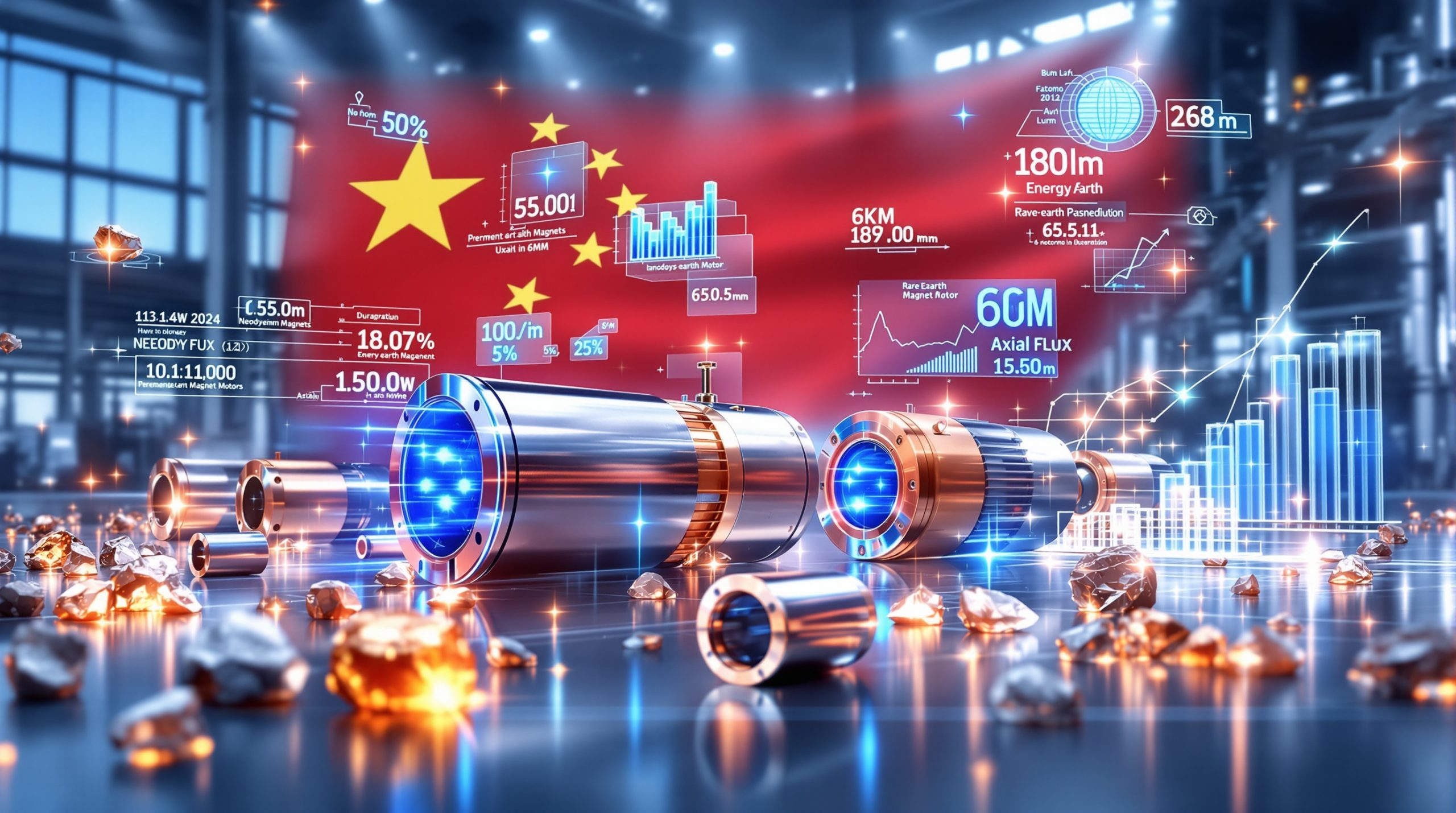What Are the Most Sustainable Crushing Technologies in Mining?
Mining operations worldwide are seeking innovative crushing solutions that reduce energy consumption, minimize dust emissions, and decrease waste. This comprehensive guide examines the latest advancements in sustainable crushing technologies that are transforming the industry's environmental footprint.
How Does Crusher Selection Impact Environmental Performance?
The Critical Role of Primary Crushers in Mining Sustainability
Primary crushing represents approximately 45% of a mine site's total energy consumption, making crusher selection a pivotal decision for environmental performance. The right crusher not only reduces power demands but also minimizes dust generation, noise pollution, and maintenance requirements—all factors that contribute to a mine's overall sustainability profile. Furthermore, with ongoing industry evolution trends, selecting appropriate crushing technology has become crucial for meeting environmental regulations.
Comparing Environmental Impacts of Different Crusher Types
Different crusher technologies offer varying environmental benefits and drawbacks:
| Crusher Type | Energy Efficiency | Dust Generation | Material Handling Capability | Environmental Advantages |
|---|---|---|---|---|
| Gyratory | High consumption | Significant | Excellent for hard rock | High throughput reduces operational hours |
| Jaw | Moderate consumption | Moderate to high | Limited with wet/sticky material | Proven durability, lower capital investment |
| Sizer | Low consumption (30-40% of installed power) | Minimal | Excellent for wet/sticky materials | Compact design, low-speed operation |
| Feeder Breaker | Low consumption | Minimal | Ideal for soft/friable materials | Ground-level installation, minimal civil work |
| Impact | Moderate to high | Moderate | Poor for abrasive materials | High reduction ratios, cubical product |
Key Environmental Considerations in Crusher Selection
When selecting crushers for sustainable operations, mining companies must evaluate:
- Material characteristics (hardness, abrasiveness, moisture content, clay composition)
- Required product size for downstream processes
- Energy consumption patterns
- Dust and noise generation potential
- Maintenance frequency and associated downtime
- Compatibility with pre-screening and ore sorting technologies
How Can Pre-Screening Reduce Energy Consumption and Waste?
The Transformative Impact of Pre-Screening
Implementing pre-screening before crushing can dramatically improve environmental performance by:
- Removing fines before they reach the crusher
- Improving throughput efficiency
- Reducing unnecessary wear on crusher components
- Lowering operational expenditure—in some cases by up to 75%
- Enabling the use of smaller, lower-power crushing equipment
Pre-Screening Technology Options
The two primary pre-screening technologies used in sustainable crushing circuits are:
- Vibrating grizzly feeders: Ideal for standard materials with moderate moisture content
- Apron feeders: Better suited for sticky materials with high moisture content
When paired with appropriate crushers (such as apron feeders with sizers for sticky materials), these technologies create synergistic efficiency gains that significantly reduce environmental impact.
What Role Does Smart Technology Play in Sustainable Crushing?
Real-Time Condition Monitoring for Preventive Maintenance
Modern crushing circuits incorporate sophisticated monitoring systems that track:
- Bearing temperatures
- Power draw fluctuations
- Throughput rates
- Vibration patterns
- Lubrication conditions
These systems allow operators to detect potential issues before they lead to failures, preventing:
- Catastrophic equipment damage
- Extended downtime periods
- Emergency repairs in high-risk areas
- Excessive energy consumption from suboptimal operation
Data-Driven Optimization for Maximum Efficiency
Smart crushing technologies leverage data-driven mining operations to:
- Adjust crusher settings in real-time for optimal size reduction
- Balance feed rates to prevent overloading
- Identify energy consumption patterns for optimization
- Predict maintenance needs before failures occur
- Reduce unnecessary idling time
How Does Ore Sorting Enhance Crushing Sustainability?
Early-Stage Waste Removal Benefits
Implementing ore sorting before crushing delivers multiple sustainability benefits:
- Reduces the volume of material requiring crushing and grinding
- Lowers energy consumption across the processing chain
- Decreases water usage in downstream processes
- Minimizes wear on crushing and grinding equipment
- Reduces the volume of tailings requiring management
Environmental Impact Reduction
By separating waste rock from valuable ore early in the process, mining operations can:
- Process smaller volumes of material through energy-intensive stages
- Reduce the size requirements for crushing and grinding equipment
- Lower the carbon footprint of the entire operation
- Decrease water consumption in processing
- Minimize the environmental footprint of tailings storage
Which Crusher Types Offer the Best Environmental Performance?
Sizers: Low-Speed, High-Efficiency Crushing
Sizers represent one of the most environmentally friendly crushing options available:
- Operate at just 30-40% of their installed power capacity
- Create minimal dust due to low-speed, high-torque action
- Handle wet and sticky materials efficiently
- Maintain a compact footprint requiring less infrastructure
- Produce less noise than high-speed alternatives
Feeder Breakers: Simplified, Low-Impact Processing
For appropriate materials (particularly softer ores like coal), feeder breakers offer significant environmental advantages:
- Require minimal civil engineering work
- Can be installed at ground level, reducing construction impact
- Generate less dust than conventional crushers
- Combine feeding and crushing functions in one unit
- Deliver low capital and operating costs with a small footprint
How Can Mining Operations Implement More Sustainable Crushing Practices?
Holistic Approach to Crusher Circuit Design
Sustainable crushing begins with comprehensive circuit design that considers:
- Material characteristics throughout the deposit lifecycle
- Integration of pre-screening and ore sorting technologies
- Smart monitoring and control systems
- Dust suppression and collection systems
- Noise mitigation measures
- Energy recovery opportunities
Matching Crusher Type to Material Properties
For optimal environmental performance, crusher selection must align with specific material properties:
- Hard, abrasive materials: Jaw crushers with appropriate wear protection
- Wet, sticky materials: Sizers with apron feeders
- Soft, friable materials: Feeder breakers or impact crushers
- Mixed materials: Hybrid systems with appropriate pre-screening
Implementing Dust Control Measures
Effective dust management in crushing operations includes:
- Enclosed crusher housings with negative pressure
- Water spray systems at transfer points
- Dust collection systems with high-efficiency filters
- Wind barriers around outdoor crushing areas
- Regular cleaning and maintenance of dust control equipment
What Are the Economic Benefits of Environmentally Friendly Crushing?
Cost Savings Through Efficiency
Sustainable crushing technologies that reduce energy, dust and waste deliver significant economic benefits:
- Reduced energy consumption lowers operational costs
- Decreased maintenance requirements minimize downtime
- Lower wear rates extend component lifespans
- Smaller equipment footprints reduce civil engineering costs
- Improved worker safety reduces incident-related expenses
Case Study: Pre-Screening Implementation
When one mining operation implemented comprehensive pre-screening before crushing:
- Operating costs were reduced to approximately 25% of previous levels
- Crusher throughput increased by over 30%
- Component wear life extended by 40-50%
- Energy consumption per tonne decreased by 35%
- Dust emissions were reduced by over 60%
How Is Crushing Technology Evolving for Future Sustainability?
Emerging Trends in Sustainable Crushing
The future of environmentally friendly crushing includes:
- Hybrid and fully electric crushing systems
- Advanced materials for longer-lasting wear components
- Integrated ore sorting with AI in mining innovation
- Closed-loop water systems for dust suppression
- Energy recovery from material potential energy
- Comprehensive digital twins for optimization
The Shift Toward Electrification
Electric crushing systems offer significant environmental advantages through electrification and decarbonisation:
- Zero direct emissions during operation
- Lower noise levels than diesel-powered alternatives
- Reduced maintenance requirements
- Compatibility with renewable energy sources
- Better energy efficiency than hydraulic systems
What Should Mining Companies Consider When Upgrading Crushing Systems?
Key Considerations for Sustainable Upgrades
When upgrading crushing systems for improved environmental performance, mining companies should evaluate:
- Total lifecycle environmental impact, not just operational efficiency
- Integration capabilities with existing systems
- Flexibility to handle varying ore characteristics
- Scalability for future production changes
- Availability of spare parts and service support
- Training requirements for operational staff
- Return on investment timeframes for sustainability improvements
Implementation Strategy
A phased approach to sustainable crushing implementation typically includes:
- Comprehensive material testing and characterization
- Audit of existing crushing circuit performance
- Identification of critical environmental impact points
- Evaluation of technology options for each impact point
- Development of integrated upgrade plan
- Staged implementation to minimize operational disruption
- Continuous monitoring and optimization
Conclusion: The Future of Sustainable Crushing in Mining
The mining industry's journey toward sustainability relies heavily on transforming fundamental processes like crushing. By selecting appropriate crusher technologies, implementing pre-screening, leveraging smart monitoring systems, and integrating ore sorting, operations can significantly reduce their environmental footprint while improving economic performance.
As regulatory pressures increase and stakeholder expectations evolve, mining companies that embrace sustainable crushing technologies gain competitive advantages through lower operating costs, reduced environmental impacts, and improved social license to operate. The future of mining depends on reimagining these foundational processes with sustainability at their core, including mine reclamation innovations that complement sustainable crushing practices.
Further Exploration:
Readers interested in learning more about sustainable crushing technologies in mining can also explore related educational content on environmentally friendly crushing machines and sustainable crushing solutions that reduce energy consumption, dust generation, and waste production across mining operations.
Looking to Identify the Next Major Mineral Discovery?
Stay ahead of the market with Discovery Alert's proprietary Discovery IQ model that instantly identifies significant ASX mineral discoveries and transforms complex data into actionable insights. Discover why major mineral discoveries can lead to substantial investment returns by exploring the historic examples on our dedicated discoveries page.




